Stagnation. Never a good thing. Not as it pertains to innovation and design and certainly not in regard to ourselves. I may not be able to change the rather drab and sterile look and feel of my current surroundings — but I’ve never worked harder in my life over the past 12 weeks to change myself. Before I had to pack up and move down to Florida, I was fortunate to spend a few weeks listening to the Pantheone I Active Loudspeaker and it changed how I’m going to evaluate wireless speakers going forward.
The Pantheone I immediately stands out in the high-end audio world, reminiscent of the Danish Davone Meander Loudspeakers in its bold design. Both push the boundaries of conventional speaker aesthetics, offering a striking departure from the often monotonous, predictable designs of many modern loudspeakers.
The Pantheone I’s unique look is a breath of fresh air in an industry where many speakers tend to blend into the background — which I think defeats the purpose of spending this amount of money on a pair of loudspeakers.
The Meander can also be converted into a wireless speaker with the integration of Davone’s WiSA module. However, that change takes these speakers to almost $10,000 USD which is substantially more than the Pantheone I which retails for $2,999 USD for a single loudspeaker.
Spending $6,000 on a pair is certainly not a small investment; especially when you may only require a single Pantheone I because of its ability to fill a room larger than my old den (16 x 13′ x 9′) in New Jersey with sound and impressive dynamic capabilities.
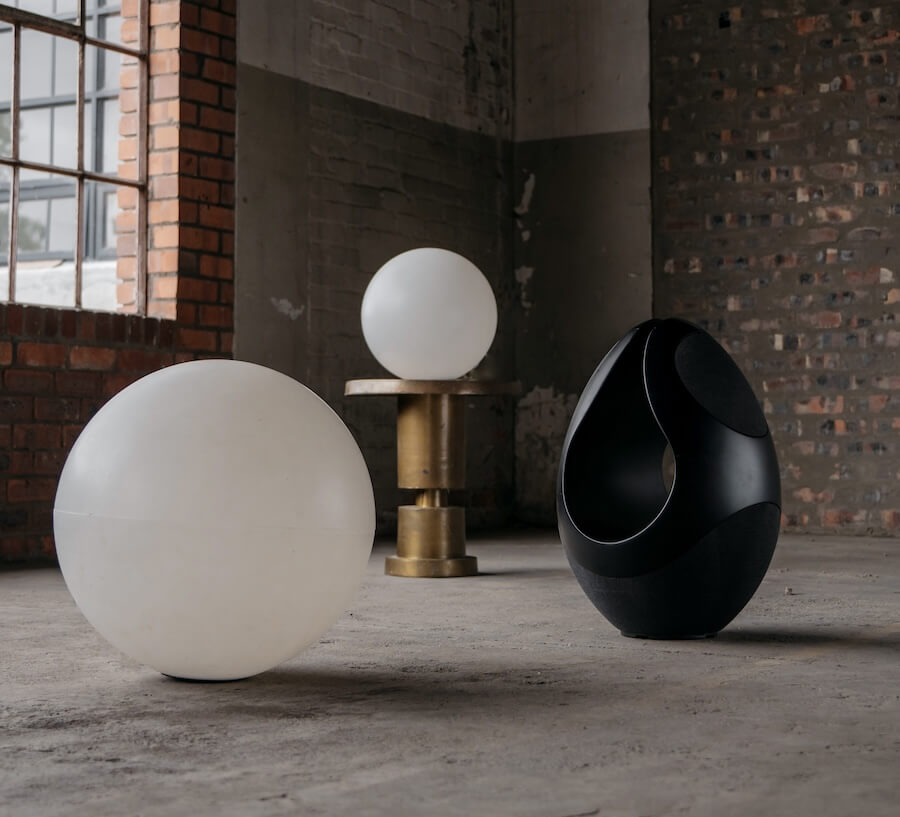
The Pantheone I is a high-end wireless active loudspeaker that blends luxury design with premium audio performance. This speaker is aimed at audiophiles and design-conscious consumers who want a seamless blend of aesthetics and high-fidelity sound. It competes with premium wireless speaker systems like Bang & Olufsen Beosound series and Devialet Phantom.
The concept of premium wireless speakers has evolved dramatically, with high-end audio brands like Sonus faber, KEF, Naim, and Marantz entering the space with models that have already become best-selling products.
The Case for Wireless Speakers
Not every audiophile is convinced, however, and a reader challenged me offline to come up with some genuine reasons why audiophiles should ditch passive loudspeakers and high-end components that we love to wax so eloquently about (questionable in my case).
Wireless speakers offer several advantages, making them a popular choice for home audio, personal use, and even professional setups. Here are the key benefits:
Convenience & Flexibility
Wireless speakers offer a hassle-free audio experience with no messy wires or complex setups, making them easy to place anywhere in a home or outdoor space. Their portability allows for effortless movement between rooms, and many models support multi-room audio, enabling synchronized playback across different areas for a seamless listening experience.
Easy Connectivity
Most modern wireless speakers utilize Bluetooth, Wi-Fi, WiSA, AirPlay, or Chromecast, ensuring compatibility with a wide range of devices, including smartphones, tablets, laptops, and smart TVs. Additionally, many smart speakers integrate with voice assistants like Alexa, Google Assistant, or Siri, allowing for convenient hands-free control.
Some Wireless speakers also offer native support for Spotify Connect, TIDAL Connect, Qobuz, and Roon.
For those tired of huge racks of equipment, most wireless speakers now offer HDMI ARC/eARC, multiple digital inputs, subwoofer outputs, internal MM phono preamplifiers — making them a central hub for your entire home system.
Multi-Room & Whole-Home Audio
Systems like Sonos, BluOS, and Apple AirPlay enable seamless multi-room audio streaming, allowing users to play the same music throughout their home or different tracks in each room based on their preferences.
Improved Sound Quality & Room Correction
High-end wireless speakers now support Hi-Res Audio, aptX, LDAC, and lossless streaming, delivering sound quality comparable to wired systems. Many also feature room correction technology like Dirac Live, which adapts audio output to the acoustics of the space for optimal performance. DSP allows for linear phase crossovers, time alignment, and bass tuning you just can’t achieve passively without expensive external gear.
Future-Proof & Scalability
As technology evolves, wireless speakers can receive firmware updates for new features and performance improvements. They also offer seamless expandability, allowing users to add more speakers to an existing ecosystem for a more immersive audio experience.
All of that make sense? Good.
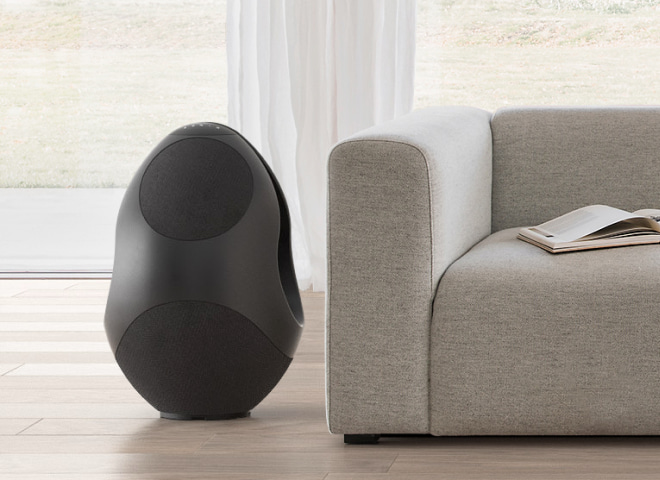
Design & Build Quality
The first thing that strikes you about the Pantheone I is its stunning sculptural design. Inspired by modern architecture, its smooth, organic form is crafted from high-density resin, a material chosen to minimize vibrations and enhance acoustics. Available in glossy black or matte white, the speaker seamlessly blends into high-end interiors, making it as much a decor piece as an audio device.
Pantheone are also clearly also very committed to ensuring that the loudspeaker arrives in perfect shape; the packaging is very inert and thick and it needs to be considering the size and weight of this product; the Pantheone I is a floor standing loudspeaker that weighs 55 pounds and will take up some space on your living room or den floor.
The dimensions are 653 x 460 x 437 mm (25.71 x 18.11 x 17.20 inches) (H x W x D) and there is no question that family members and guests will want to know what it is.
If there was ever a loudspeaker that deserved some product placement in something like the forthcoming final season of Andor — the Pantheone I might be my first choice. Streaming on Coruscant?
Despite its rather striking artistic appeal, the Pantheone I is incredibly functional. The built-in subwoofers and tweeters are carefully positioned to provide a 360-degree immersive listening experience. The touch-sensitive controls on the speaker’s surface offer an intuitive user experience, while the Pantheone app provides additional customization options.
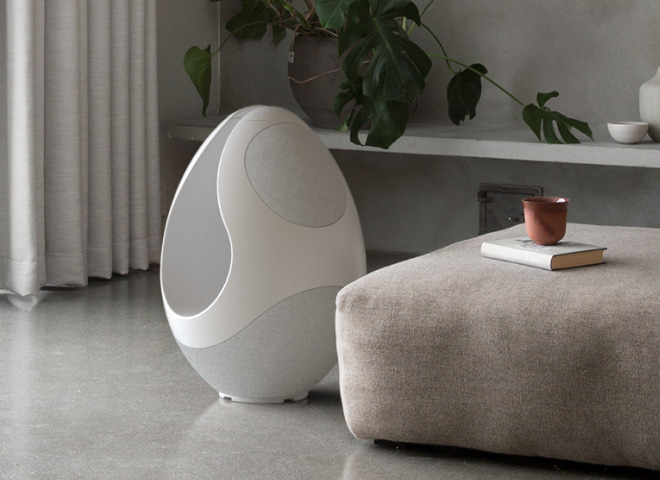
Smart Features & Connectivity
The Pantheone I isn’t just about a superior sonic experience —it’s also a smart speaker. It comes with built-in Alexa voice assistant, allowing users to control playback, adjust volume, and access smart home functions hands-free.
Key Features:
- 360° Sound Projection: Delivers immersive, room-filling audio with powerful bass and crystal-clear highs.
- Dual Subwoofers & Tweeters: Uses two 6.5-inch subwoofers, two 4-inch coated paper cone midrange drivers, and four 0.75-inch silk dome tweeters.
- Built-in Streaming & Smart Features: Supports Wi-Fi, Bluetooth 5.0, AptX, AirPlay 2, Spotify Connect, TIDAL Connect and Alexa integration.
- 24-bit/192kHz PCM
- Class D power amplifier with DSP that outputs 2 x 130 watts into each subwoofer, and 2 x 70 watts into both midrange drivers and the 4 tweeters.
- Premium Materials: The enclosure is made from handcrafted resin, ensuring acoustic precision and minimal resonance.
- App Control: The Pantheone app allows users to control playback, streaming services, and multi-room audio settings. Versions for both Android and iOS
- Frequency response is 33Hz — 22kHz.
- Multi-room compatibility, allowing you to sync a maximum of 10 speakers for a unified audio experience.
- Autonomous Mode: Can function as a standalone speaker without needing additional amplifiers or receivers.
- Top touch panel includes controls for Play/Pause, Skip/Backward, Microphone Mute, Volume Up/Down, Power, Pairing, Input Mode and Panel Lock.
Inputs include a single power receptacle, 1 x 3.5mm mini-jack, and a 10/100M RJ45 Ethernet port which are located on the bottom of the enclosure to keep everything hidden.
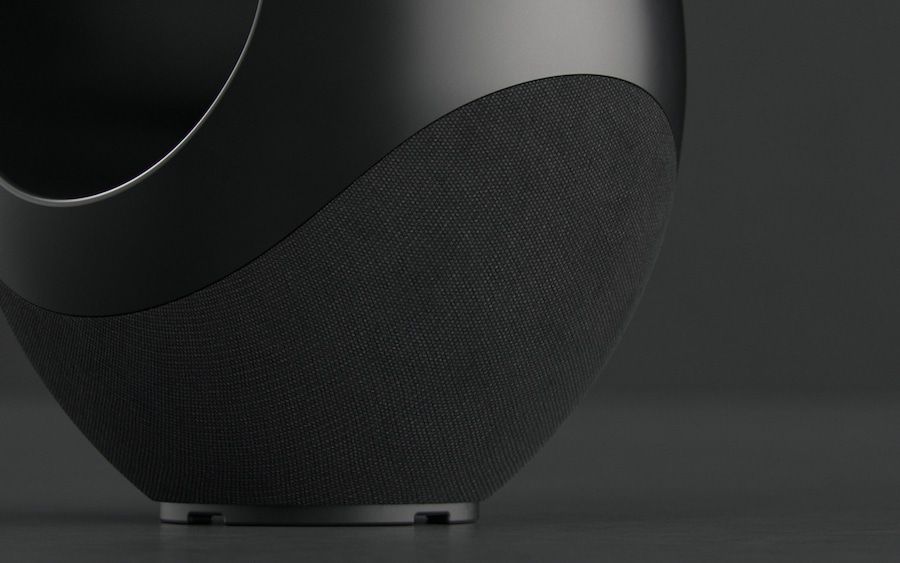
Set-Up
Omni-directional loudspeakers—those that radiate sound in all directions rather than focusing it forward—can offer a uniquely immersive and natural soundstage. But they also come with real-world trade-offs that can limit their appeal, especially for audiophiles chasing precision and control.
Omni-directional speakers can sound open, airy, and room-filling, but they often sacrifice imaging precision, bass control, and room flexibility to achieve that. They’re best suited for listeners who prioritize ambiance and envelopment over razor-sharp detail or critical listening.
Some might argue that I’m generalizing about the entire category, but some of those issues are true based on my experience listening to MBL, Duevel, or vintage Ohm loudspeakers.
Room placement flexibility is definitely an issue with the Pantheone I because they need to be plugged into the wall (or a floor outlet). And do you really want to see long power cords snake across your living room floor if you decide to purchase a stereo pair. You also need to consider the routing of your Ethernet cable should you suffer from any Wi-Fi signal issues at home.
More importantly, the speaker’s omni-directional driver layout and powerful subwoofers don’t play well with corner placement. In both my former 16’ x 13’ x 9’ den in New Jersey and my current 13’ x 10’ x 9’ home office in Florida, early testing (before the flooring was even installed) made it obvious: corners wreak havoc on clarity and imaging.
The sub-bass became overwhelming, blurring detail and collapsing the soundstage. These speakers need space to breathe—pulled away from boundaries—to deliver their best performance.
The takeaway? While the Pantheone I can look stunning anywhere, it doesn’t sound good everywhere. Room-aware placement is essential, and the power cord situation may limit your options more than expected.
These need some space around them and they were much better suited for the den in New Jersey where I could pull them almost 4 feet from the wall behind them and let them do their thing.
Pantheone Control App
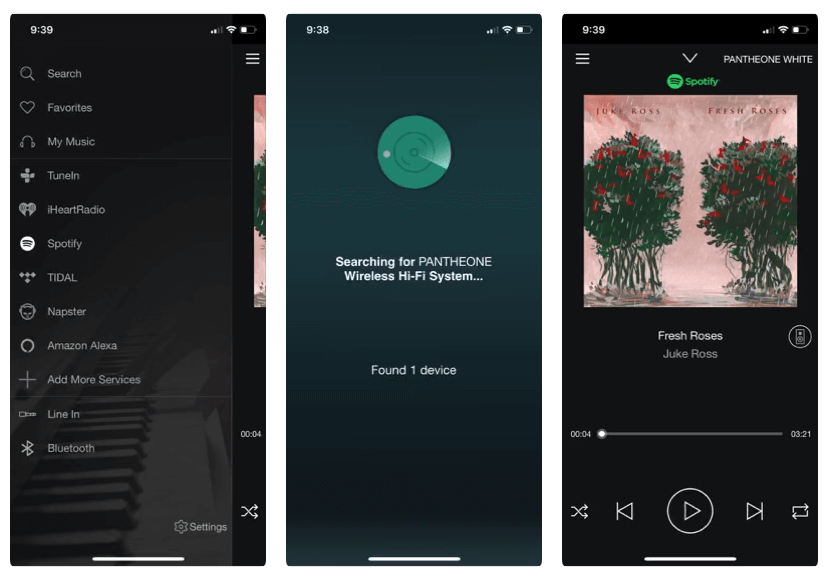
The setup for the Pantheone I’s control app is generally straightforward, but as with most high-end wireless speakers, there are a few points to consider:
The app is available for both iOS and Android and it worked without issue with my somewhat ancient iPhone SE (someone smashed my iPhone 11 with a hammer. Twice).
If you’re setting up multiple Pantheone I speakers, the app’s multi-room setup is intuitive, but may require some trial-and-error to get the speakers in sync for true stereo or multi-room listening.
You can tweak settings like treble, bass, and mid-range directly from the app and If you’re using Alexa or another voice assistant, it’s a simple setup through the app to link it.
You can also group multiple Pantheone I speakers, adjust their individual volume levels, and assign them to different rooms in your home. Integration with TIDAL Connect and Spotify Connect was without any issues.
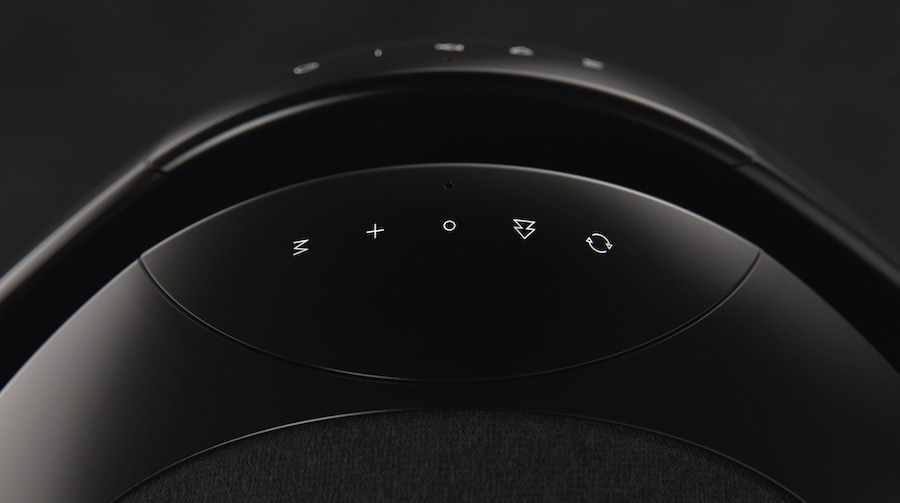
Listening
After settling on the final placement for the Pantheone I—about 4 feet from the wall in front of my fireplace, and slightly off-center to balance the sound—I was ready to dive into testing. The positioning was crucial: away from the walls to avoid overemphasizing bass and ensuring the omni-directional drivers had room to breathe.
However, as any dog owner knows, the Westie (Tyrion) found the speaker more intriguing than I anticipated, sniffing around and exploring the source of the sound that was seemingly emanating from a blank canvas floating in front of him.
Once I had everything dialed in, it was time to fire up TIDAL and cue up three of my go-to playlists for a real-world soundcheck. With the app controlling volume, EQ, and source, I could focus on the music while Tyrion busied himself with his own agenda that involved shredding packing materials. I am going to miss him terribly.
One track that truly tested the Pantheone I’s ability to deliver emotion was Nick Cave’s cover of Leonard Cohen’s “Avalanche.” The strong piano accompaniment, combined with the deeply moving lyrics, gave the speaker an opportunity to showcase its ability to convey subtle nuances. This is a track I’ve listened to repeatedly over the past seven months, and each time it cuts me slightly differently.
The Pantheone I captured the depth and resonance of the vocals and piano in a way that felt genuine, with the omni-directional sound pulling the room into the track’s intense emotional pull. With each note and every syllable of Cave’s delivery, the speaker delivered a richness that made the pain, loss, and soul-searching in the song even more palpable. For me, this track is more than just music; it’s a reflection of everything I’ve gone through and lost over the past 7 months.
The Pantheone I helped bring that intensity to life in my space, and while they may not offer the precise imaging of more traditional loudspeakers because of their dispersion pattern, the immersive quality of the sound impacted me regardless of where I sat.
Lying on my back and staring up at the ceiling (a minor reminder of the water stain I never quite got around to fixing), the Pantheone I created an almost surreal listening experience. It felt as though Cave himself was right there in the room, playing just over my right shoulder. The sound was detailed and enveloping, with the vocals seemingly floating in the air, while the piano notes reverberated not just in the speakers, but along the floor beneath me.
It was one of those moments where the speaker truly transcended its physical form, blending seamlessly into the space. The omni-directional dispersion made the sound feel open and expansive, wrapping around me and filling the room in a way that felt organic and natural. I was no longer just listening to the song—I was immersed in it, living it.
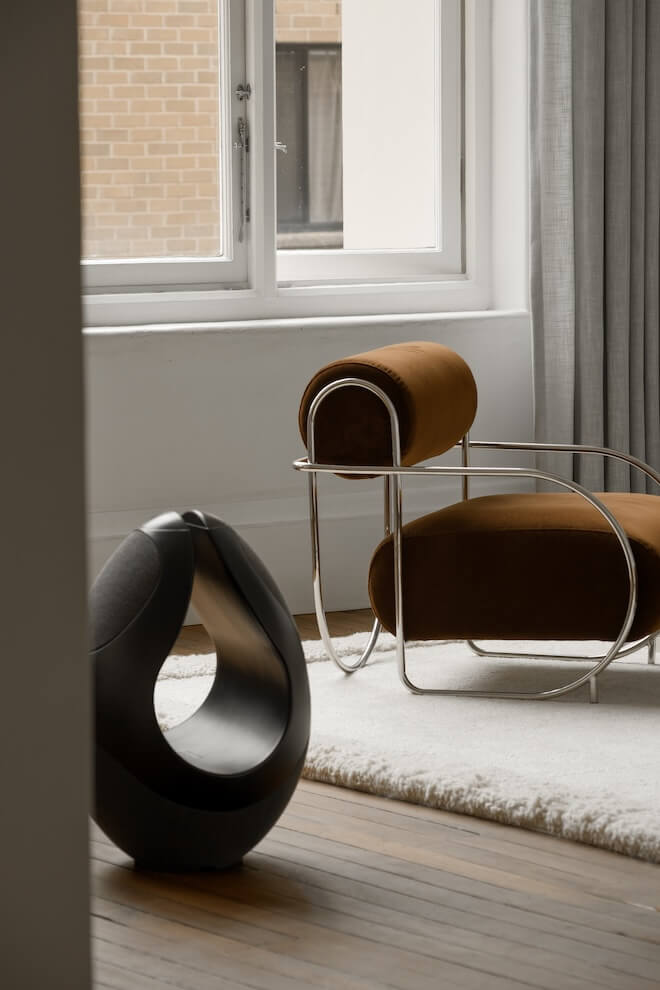
Switching to something more upbeat, I cued up Talking Heads’ “This Must Be the Place (Naive Melody, 2025 Remaster, 16-bit/44.1kHz) to see how the Pantheone I would handle 1980s new wave. David Byrne’s distinctive vocals floated around me, but compared to the deep emotional resonance of Nick Cave’s performance, there was a slight softness in the clarity and precision of the voice.
The omni-directional sound created a wide, ambient feel, but the vocals weren’t as incisive or sharply defined, especially in the more dynamic moments of the song.
The synthesized bass moved along at an energetic pace, filling the room with that signature driving groove. However, as the bass deepened, I noticed a loss of detail and clarity in the lower frequencies—particularly on the lower synth notes. While the speaker captured the broad energy of the track, the more intricate bass details that define new wave can get a bit muddy in the process.
Dolly Parton has long been a guilty pleasure for me—her music, her charm, and her unwavering resilience are timeless. It’s hard not to feel deeply for her with the recent passing of her husband of nearly 60 years, Carl Dean, on March 3, 2025.
Dolly has always reminded me of two women who’ve had a similar impact on my life: raw beauty, intelligence, and a fiery personality that commanded my attention and took me someplace down a very dangerous rabbit hole with life-altering consequences.
When I played “I Will Always Love You,” the Pantheone I delivered the warmth and clarity of her voice with impressive presence, without losing the intimacy of her storytelling. That hauntingly beautiful quiver in her voice that highly resolving loudspeakers can emphasize was enough to pull me over the edge and shut down for the night – sadly aware of how quickly my mental health was about to disintegrate and land me back in the hospital for 12 weeks.
On my final day in New Jersey, just before my move to Florida, I spent an hour with some of my favorite tracks, knowing that this might be my last chance to enjoy these excellent wireless speakers in this space. I cued up an eclectic mix of Coltrane, Fleck, Byrd, Green, and the legendary Ella Fitzgerald, letting the Pantheone I fill the room with its rich, complex sound.
It was one of those moments where I felt an almost reverent connection to the music—the swirling saxophones, the precision of Fleck’s banjo, the smooth brilliance of Fitzgerald’s vocals—all resonating through the speaker with clarity and detail that you should demand from loudspeakers at this price point.
The Pantheone I did an admirable job of capturing the nuances in the instruments, especially in jazz, where every note counts and the pacing needs to be dead on.
While the Pantheone I delivers very impressive sound overall, there are a couple of areas where it falls short. The first issue arises when you push the volume too high. At louder levels, the speakers lose a bit of composure, especially in the bass range, where there’s a loss of definition.
Secondly, the midrange might feel a little too warm for some listeners, which can result in a slightly recessed presentation of certain instruments or vocals. While rich and clear, this warmth can sometimes obscure fine details, particularly in more complex mixes or for listeners who prefer a more neutral, detailed midrange.
In terms of vocals, the Pantheone I excels at delivering rich and clear voices, but there is a slight trade-off when it comes to stereo imaging. The omni-directional design creates an immersive soundstage, but at the same time, it sacrifices the rock-solid stereo image that traditional speakers with dedicated left and right channels can provide. While the vocals are still enjoyable and intelligible, they lack that crisp separation that would make them feel anchored in space.
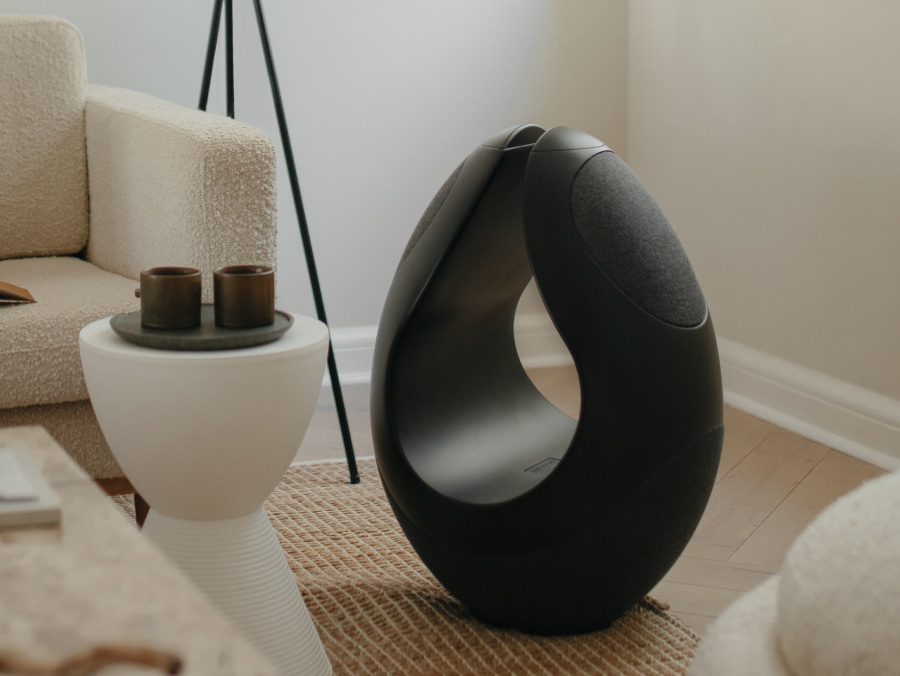
The Bottom Line
The Pantheone I isn’t just a wireless speaker—it’s a statement piece that blends design, technology, and sound in a way few products can. With its sculptural form, powerful low-end, and enveloping omni-directional sound, it’s ideal for those who want audiophile performance without the usual clutter.
While we appreciate the Pantheone I’s design-driven goal of reducing cable clutter, the lack of digital inputs—such as optical, coaxial, or HDMI ARC—feels like a missed opportunity. Without them, connecting a TV, gaming console, or CD player requires workarounds or compromises, limiting the speaker’s versatility in a modern media setup.
A potential solution? Pantheone Audio should consider offering a dedicated wireless connection hub, similar to what Dynaudio includes with its Focus series. A companion box with multiple inputs and low-latency wireless transmission would allow users to seamlessly connect traditional sources while preserving the speaker’s minimalist, cable-free aesthetic.
In a category where flexibility increasingly matters as much as sound quality, this small addition could greatly enhance the Pantheone I’s appeal without compromising its core design philosophy.
If you value aesthetics and ease of use as much as sonic immersion, this is a system that delivers on both fronts—as long as you’re mindful of placement and don’t mind being tethered to the nearest wall outlet.
Despite its few shortcomings, it offers a unique blend of style, convenience, and sound quality that makes it a standout in the premium wireless speaker market.
Pros:
- Striking sculptural design that doubles as high-end decor
- Omni-directional soundstage creates a wide, immersive listening experience.
- Deep, powerful bass from built-in subwoofers—surprisingly robust for its form.
- Modern streaming support: AirPlay 2, Spotify Connect, Bluetooth, and Alexa voice control
- Easy setup with no need for external amps, DACs, or cabling clutter
- Ideal for design-conscious listeners who want a true plug-and-play hi-fi experience.
- Definitely worth the money.
Cons:
- Limited placement flexibility due to reliance on wall power; no battery means visible cords can be an issue in stereo setups.
- Corner placement degrades performance—powerful subwoofers and omni dispersion can lead to bloated bass and smeared imaging in untreated or small rooms..
- Lacks analog and digital inputs beyond a single 3.5mm jack—no RCA, optical, or HDMI ARC support
- Omni-directional design sacrifices imaging precision compared to traditional front-firing speakers..
- Sound is spacious but not as detailed or dynamic as similarly priced traditional hi-fi setups.
- Large footprint may not suit smaller spaces despite its sculptural appeal.
Where to buy:
Related Reading:
- Best Wireless Speakers
- Splurge Gift Guide: Home Theater and Hi-Fi Gifts Under $3700
- Marantz’s Grand Horizon and Horizon Wireless Speakers: Preview

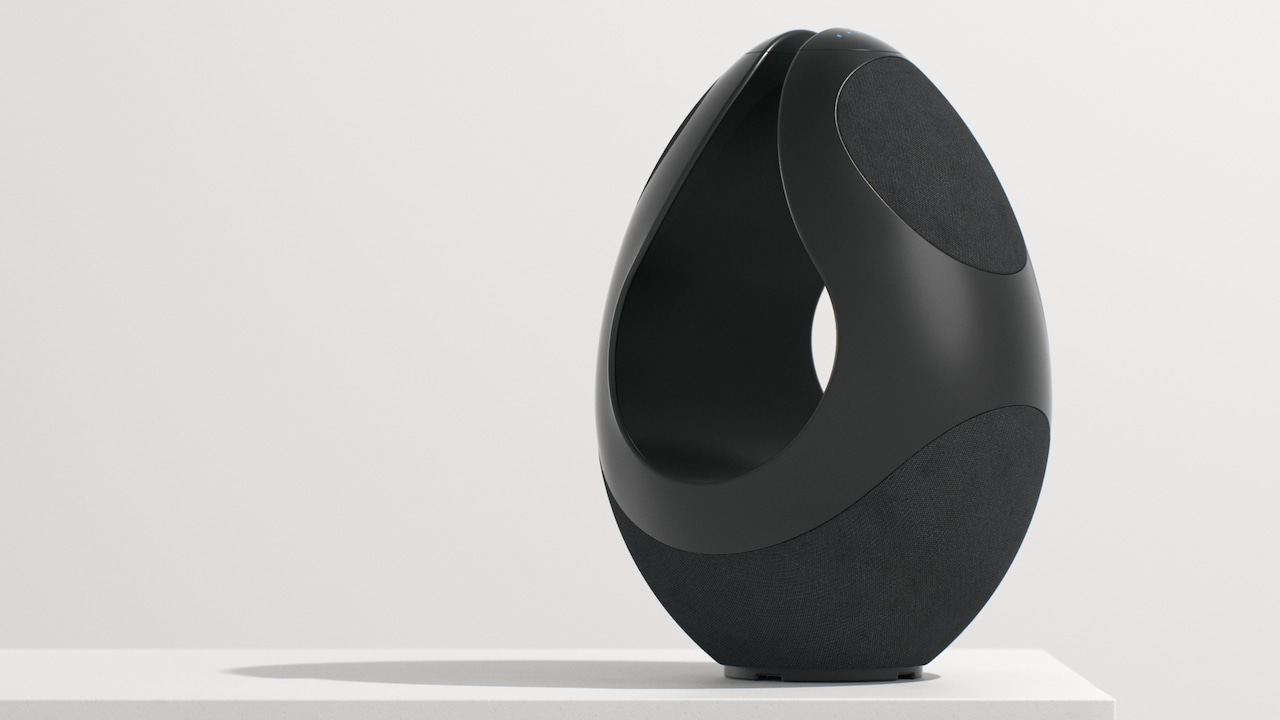



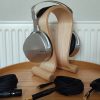




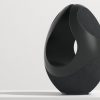


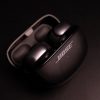

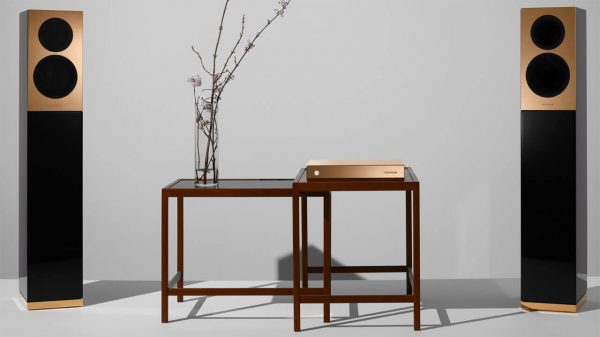


















Antonio Montana
April 5, 2025 at 10:59 am
Took some time to get through all of that, but what a good write-up of a rather unconventional looking speaker.
Omni-directional speakers are hit and miss most of the time — especially those Ohm speakers that are hideous looking.
These would look cool in British Racing Green or a glossy white.
How loud can these things play?
Ian White
April 5, 2025 at 1:52 pm
Appreciate the kind words. That review took some time being out of the loop for awhile. Really like them a lot. Build quality is solid.
I’m also on the fence in regard to omni-directional speakers. I’ve owned 5 pairs of electrostatic loudspeakers and currently own one pair of ribbon speakers. Different beasts.
Not in agreement in regard to the color changes. The black and white look excellent and I think offering too many colors is a mistake. Look at the hideous speaker just released by B&O. Shudder.
They can play rather loudly, but I suspect you would need a pair to fill a much larger space than I own. Would be an excellent system for a large open living space where you could put them 4-5 feet from any wall.
IW